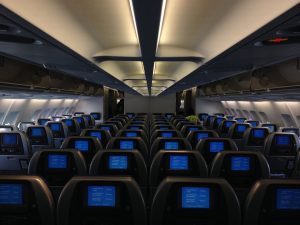
An environmental control system (ECS) is an important part of most airplanes. Commercial airplanes have an average cruising altitude of 31,000 to 38,000 feet. When flying at such high altitudes, they require an ECS. An ECS will create a safe, comfortable climate for the crew and passengers alike.
Overview of ECSs
An ECS is a system that, among other things, regulates the pressure and temperature of an airplane’s cabin. It’s essentially a computer that sends signals to various equipment. The ECS will regulate the cabin pressure and temperature, ensuring that it’s safe and comfortable at all times.
Pressurization
The pressure of an airplane’s cabin is controlled by the ECS. The air is thinner at high altitudes. As a result, airplanes require pressurized cabins. By pressurizing the cabins, airplanes can provide their crew and passengers with a safe and comfortable environment.
The ECS regulates cabin pressure. Different airplanes use different methods to pressurize their cabins. Most of them, though, bleed air from their respective engines. This air is compressed and sent into the cabin where it increases the pressure of the cabin. The ECS is responsible for controlling how much compressed air enters the cabin.
While most airplanes bleed off air from their engines to use in the cabin, this doesn’t apply to all of them. The Boeing 747, for example, uses air from inlets. It has inlets on the wings that suck in air. The air from these inlets is then used to pressure the Boeing 747’s cabin.
Temperature
An ECS will control the temperature of an airplane’s cabin as well. Before entering the cabin, the bled-off air will pass through a special heat exchanger. Known as a pre-cooler, it’s designed to absorb heat.
The air from jet engines is extremely hot. Therefore, it must be cooled before entering the cabin. The pre-cooler is designed to cool this air. It will absorb heat from the bled-off air so that it becomes cooler. The ECS helps to regulate cabin temperature by controlling the pre-cooler.
Other ECS Functions
The primary purpose of an airplane’s ECS is to regulate the cabin pressure and temperature. But ECSs have other functions, some of which are equally as important.
An airplane’s ECS, for instance, may provide smoke detection. Airplanes have smoke detectors inside of the cabin. On some airplanes, the ECS will collect data from these smoke detectors to determine whether there’s a fire. Many ECSs also control fire-suppression equipment. If the ECS detects a fire within the airplane’s cabin, it will automatically activate the fire-suppression equipment.



